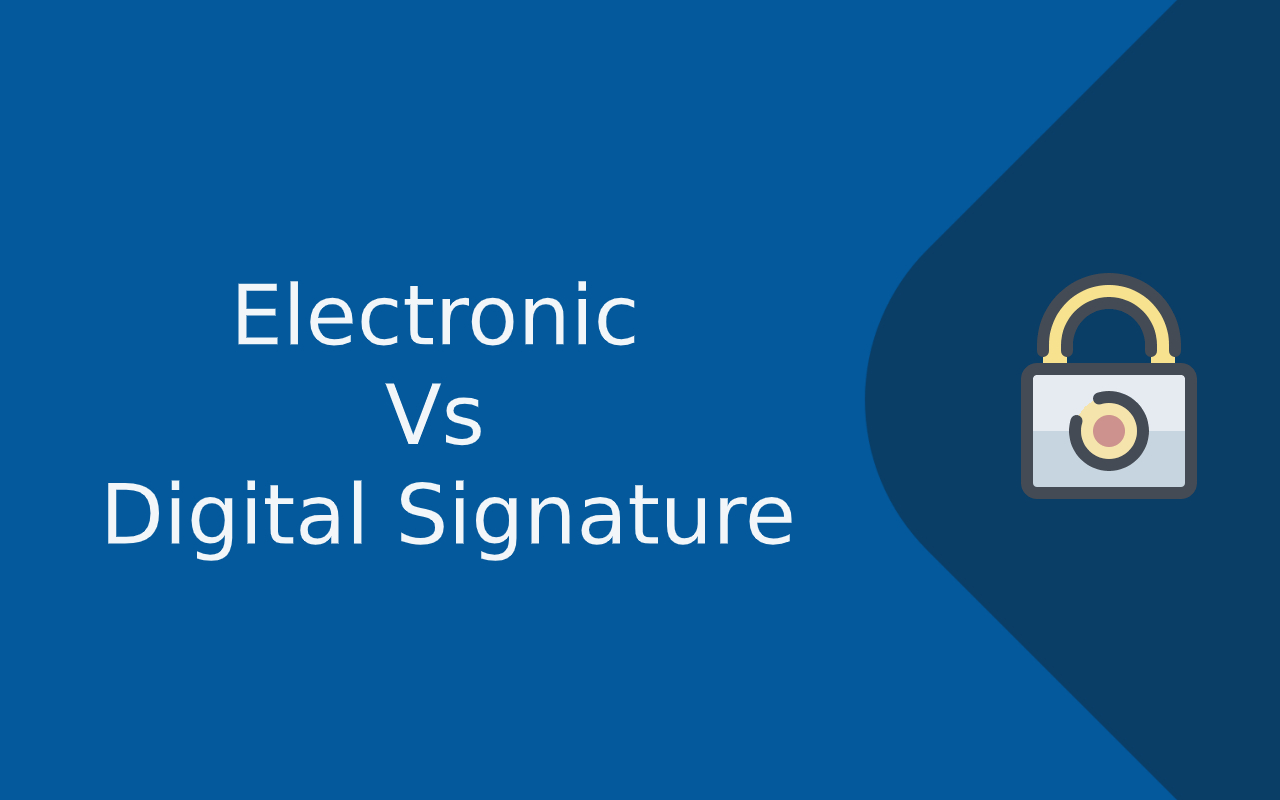What is the difference between Electronic and Digital Signature?
Any amateur without proper knowledge about the digital world will often confuse electronic and digital signatures with being the same and often use the terms interchangeably.
But there are significant differences between the two! The main difference between the two is that the digital signature is used for securing the documents and is authorized by the certificate authorities as secure and verified, whereas electronic signatures are where there is a contract where the one who signs has an intention to do the same.
Digital signatures are actually a type of electronic signature with a significant difference i.e. providing more security than a traditional electronic signature.
Before understanding the differences let us first brush up our knowledge about digital and electronic signatures.
Electronic Signature –
With electronic signatures, any business/vendor can perform the following tasks –
- Verification of the identity of the signer can be done
- The retention and storing of completed documents can be done easily
- The association of the signer can be done with the signing process
- The binding signature can be safely captured
These reasons were very important in helping Electronic signatures gain popularity.
Electronic Signatures were also popular due to their ease of operation i.e. they can be easily signed online just by few mouse clicks, which is a very easy task for any person operating a system. The main reason for their declining popularity and trust was due to the lack of security provided by them.
The electronic signatures are a substitute for handwritten signature in a business process.
They are not monitored and regulated the way digital signature is, i.e. their operation and functionality totally depend upon the vendor assuring the user regarding the security of his/her information. It totally depends upon the intentions of the vendor whether he will be providing the user with the assured safe environment or not.
The major fault in the electronic signature is that they are not coded properly and can be easily hacked in and the information of the signer can be tampered, posing a threat to a person’s data which is the new gold in today’s society.
Due to these security issues, they are being replaced by their counterpart ‘Digital Signatures’.
Digital Signatures –
Today everyone is familiar with the term ‘fingerprint’; well we can say that digital signature is a virtual fingerprint to your document. This makes the information to be completely embedded in the document within a very secure environment.
Digital Signatures use the PKI (Public Key Infrastructure) that is a two-way verification, both the requesting and the providing parties of the information making it impossible for the malicious hackers of stealing or tampering the information provided by the user.
In this procedure first, a key is generated (public key) and is then correlated with the user’s private key under this procedure and then signing is done by the user using his/her private key. After this, the signature is identified with the help of the public key.
The identifying of the signers and the initiator is the main difference between an electronic and a digital signature.
There are various types of Digital Signatures namely –
- Class 1 (Least security among the three types of digital signature with minimum security requirements.)
- Class 2 (The verification of a person’s information is done by a pre-verified and trusted database)
- Class 3 (This is the highest level of security in which the physical presence in front of the Registration Authority is necessary to prove one’s identity)
- Examples include – Adobe Signature, Word Signature, etc.
These are some of the points which tell us about digital and electronic signatures.
Conclusion –
Now since we have learned some basics about both digital as well as electronic signatures let’s summarize the main differences between the two –
- A digital signature is used for securing a document whereas an electronic signature is used for verification if the document.
- Digital Signatures are authorized by CA (Certificate Authority) whereas on the other had electronic signatures are unauthorized and depend on the vendor.
- Verification of a digital signature can be done easily whereas it is very tough in case of electronic signature making it difficult to trace the tampering party in-case.
- Due to a higher level of security and authenticity, the digital signature is always preferred over the electronic signature.
Due to the lack of knowledge people often confuse both the terms (Digital and Electronic Signature) as one, but there is a big difference between the two when it comes to virtual world use. A digital signature is more preferred due to its security facilities which make it more trustworthy for the user.


